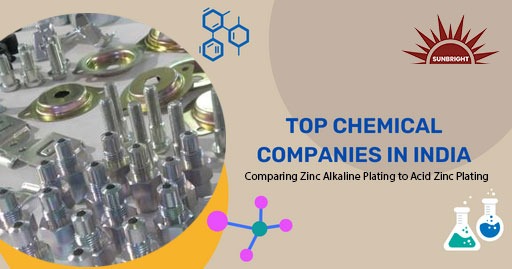
Blog Details

Comparing Zinc Alkaline Plating to Acid Zinc Plating
Rust prevention is accomplished through plating. We frequently use the zinc plating method to shield the iron and steel metal surfaces from rust-induced corrosion. In order to produce a physical barrier, we therefore apply a thin layer of zinc to the metal surface (substrate). We frequently use acid zinc plating and alkaline zinc plating, which are the two main types of zinc plating. Numerous base metals and alloys can be coated with zinc chloride or zinc alkaline plating. The unique needs of the base metal, the coating, and what might happen to the component following the plating process are the main determinants of which method should be used.
To make sure that our plating process is suitable for your project, it is crucial for our team at PGV SUNBRIGHT CHEMICALS to comprehend the usage of the part and the material applied. First we will get to know what is acid zinc plating and what is zinc alkaline plating.
What is acid zinc plating?
Acid zinc plating is an electroplating technique that makes use of acidic solutions like zinc sulphate or zinc chloride complexes. This procedure is more recent than alkaline zinc plating. Today, we use acid zinc plating methods for about 50% of the zinc plating operations. Cast iron, malleable iron, and carbonitrided iron are among the metal forms that can be electroplated with this method.The most popular method for preventing rust on metal surfaces is zinc electroplating. There are three types of zinc plating: acid zinc plating, alkaline cyanide plating, and alkaline non-cyanide plating.
What is zinc alkaline plating?
Alkaline zinc plating is an electroplating technique that makes use of alkaline solutions. This plating technique has two separate processes: alkaline cyanide plating and alkaline non-cyanide plating.
Differences between acid zinc plating and zinc alkaline plating.
Alkaline zinc plating is a method of electroplating in which alkaline solutions are used as opposed to acid solutions for the electroplating of zinc. Between acid zinc plating and alkaline zinc plating, there are a number of variances. Above all, the primary distinction between acid zinc plating and alkaline zinc plating is the electrodeposition rate, which is higher in acid zinc plating and lower in alkaline zinc plating. Another significant distinction between acid zinc plating and alkaline zinc plating is the amount of waste that needs to be treated. Acid zinc plating requires much less waste treatment than alkaline zinc plating. The main distinction between alkaline zinc plating and acid zinc plating is that the electrodeposition rate of acid zinc plating is higher than that of alkaline zinc plating.